Floating hip: A case report
2 Department of Orthopaedic Surgery, Busan Paik Hospital, College of Medicine, Inje University, Busan, Korea, Email: docos@naver.com
Received: 08-May-2017 Accepted Date: May 29, 2017 ; Published: 31-May-2017
This open-access article is distributed under the terms of the Creative Commons Attribution Non-Commercial License (CC BY-NC) (http://creativecommons.org/licenses/by-nc/4.0/), which permits reuse, distribution and reproduction of the article, provided that the original work is properly cited and the reuse is restricted to noncommercial purposes. For commercial reuse, contact reprints@pulsus.com
Abstract
The floating hip injury refers to a form of serious injury caused by high-energy trauma involving simultaneous fracture of the femur and ipsilateral pelvic bone or acetabulum. Such injury is known to very rare and its treatment guidelines have not been clearly established. Existing studies have classified the injury into two major types according to the forms of injury to the pelvis or acetabulum, and subsequently, another type with injuries to both the pelvic ring and acetabulum was added to the classification. These studies applied surgical or conservative treatments on each type and reported on treatment outcomes and complications. We experienced a case of a 25-year-old female patient who fell from three stories high and sustained simultaneous fracture of the right femoral neck and shaft, along with the pelvic ring and acetabulum. This case could not be classified by previously reported methods and data on treatment outcomes on such cases were unavailable as well. Accordingly, we used screws, metal plates, and intramedullary nails for fixation of the multiple fractures in the femur and pelvis. As a result, we achieved good clinical outcome, which is being reported here along with a literature review.
https://matadorbet-giris.com https://grandpashabeti.com https://betiste.com https://bahsegelgirisi.com https://klasbahisgirisi.com https://jasminbeti.com https://hepsibahise.com https://dinamobetgirisi.com https://betvolegirisi.com https://betpark-girisi.com https://betlikegiris.com https://betboogirisi.com https://sultanbetegiris.com https://tulipbetgir.com https://padisahbetegir.com https://savoybettinge.com https://goldenbahisegiris.com https://maksibetgirise.com https://fenomengiris.com https://jojobetgiris.xyz https://tarafgiris.com
Keywords
Floating hip, Femur fracture, Pelvic fracture, Acetabulum fracture
Introduction
The floating hip injury can be defined as an injury in which a fracture in the pelvic ring or acetabulum is accompanied by ipsilateral femoral fracture [1]. Such complex injury is a rare case with an incidence rate of one in ten thousand fracture patients and its treatment is known to be difficult. Moreover, it is known to be accompanied often by anterior or posterior joint dislocation and to occur commonly in young males mostly from high-energy trauma [2,3]. Liebergall reported that the injury can be classified as posterior or central type injuries, which can have different treatments and prognoses [1]. Meanwhile, Nathan classified type A as femur fracture occurring together with pelvic ring fracture and type B as occurring together with acetabulum fracture, and claimed that type B was a true form of floating hip [4]. Müller et al. added type C classification as femoral, pelvic ring, and acetabular fractures occurring simultaneously [5]. However, we experienced a patient who sustained a fracture of femoral shaft and neck, simultaneously with pelvic ring and acetabular fractures. Although our case would correspond to type C classification by Müller according to existing classification methods, we believe that there was no appropriate classification since fracture occurred in two places on the femur. Therefore, we are reporting our treatment experience in this case and proposing that the femoral fracture pattern to be included in the classification of the floating hip injury types based on our case report.
Case Report
A 25-year-old female patient was transported to the emergency room at our hospital after sustaining multiple fractures from jumping from the third floor of a building to concrete ground. This patient was under medication for compulsive disorder, eating disorder, and depression diagnosed by the department of psychiatry at another hospital. X-rays taken at the time of admission showed a displaced comminuted fracture in the right femoral shaft and displaced transverse type fracture of the right acetabulum, right side posterior iliac crescent fracture, and left pubic superior and inferior rami fractures in the area above the pelvis. Intramedullary nailing was performed on the right femoral shaft on the third day after the injury. Postoperative X-ray results showed a femoral neck fracture, and as a result, preoperative radiologic images were reevaluated, from which non-displaced fracture of the lateral buttress of the femoral neck was found on coronal view of the preoperative computed tomograpy. On the day after discovering the femoral neck fracture, multiple screw fixation was performed, together with internal fixation throuth the posterior surface of the iliac wing for the right side posterior iliac crescent fracture. Seven days later, the trasverse acetabular fracture was fixed under Stoppa approach with plate and screws (3.5mm pelvic reconstruction plate, AO/ASIF synthes ®). One week after the final procedure, the patient began to use a wheelchair, and at postoperative 16 weeks, the patient began weight-bearing walking since signs of callus formation on the fractured area were observed. In the final follow-up, bone union was achieved, but there was deformation of the left pubic bone and ischium, which did not undergo internal fixation, resulting in bone union with the pelvic ring being asymmetric. The patient recovered without limping or any limitations in her joint movement (Figure 1-5).
Discussion
The floating hip is a skeletal damage that involves both the proximal and distal portion of the hip joint, which is highly unlikely to occur with fractures on both sides being in unstable state. Such injury appears as 3 types of injury patterns with femoral fracture from high energy trauma being accompanied by pelvic ring fracture, acetabular fracture, or both acetabular and pelvic ring fractures. It is more common to find hip injuries to involve simultaneous fracture of both the acetabulum and pelvic ring, rather than each individually [6]. Based on our case, we believed that segmental fracture or multiple fractures of the femur should be considered in the classification for the floating hip. Sciatic nerve palsy commonly accompanies injuries other injuries caused by high-energy trauma, occurring in about 1/3 of the cases [2,5-7], and the prognosis may be extremely poor when vascular injury is accompanied [8]. Soft tissue injury may be accompanied as well, and in such cases, resulting compartment syndrome should be kept in mind [4]. There was no nerve or vascular damage in our case and soft tissue damage was not significant as well, while edema after injury was at about medium level. Liebergall indicated that early fixation on pelvic and femoral fractures is needed for floating hip fracture cases, during which time, fixing the femur first can be useful for intra-articular acetabular fracture reduction through traction, but that would be limited to cases without hip dislocation [1]. Tiedeken emphasized the need for emergency open reduction within 6 hr in hip dislocation cases due to possible necrosis of the femoral head from avascular state [4]. We also attempted intramedullary nail fixation on femoral shaft fracture first to make it easier for reduction of pelvic fracture. However, postoperative X-ray results showed femoral neck fracture, and retrograde review indicated that preoperative diagnosis failed to identify the femoral neck fracture. Swiontkowski reported that simultaneous fracture of ipsilateral femoral shaft and neck may be caused by high-energy trauma, occurring in 5% of femoral shaft fractures, and claimed that fixation of femoral neck fracture must be performed first to reduce the risk of avascular necrosis [9]. In our case, displaced femoral neck fracture was discovered after intramedullary nail fixation on the femur shaft had been performed. Multiple screw fixation was performed the day after femoral neck fracture was discovered and internal fixation using pelvic reconstruction plate and screws was also performed for posterior iliac crescent fracture. After 7 days had passed, internal fixation was performed under Stoppa approach for the trasverse acetabular fracture to promote hemodynamic stability. Early reduction and fixation of fractures can allow faster recovery of walking and activities, which enhance the treatment outcome [10]. In our case, the patient was able to use a wheelchair starting from 7 days after the final procedure, meaning activities were allowed within a relatively short period of time. During the follow-up period, displacement and bone deformation in the pubic area, resulting in loss of pelvic symmetry. It appeared that internal fixation should have been performed on pubic bone fracture as well, and thus, this remained an unfortunate aspect in this case. However, the patient did not show any restrictions in her walk or joint movement during the final follow-up. Therefore, when dealing with the floating hip injury, it should be kept in mind that it is a high energy injury, and even if it is a micro-injury such as a nondisplaced femur neck fracture, the extent of the injury may increase later on, and close attention should be paid in the early stage of the injury to not overlook any part of the injured area. Moreover, presence of neurovascular injury must be thoroughly checked and the fact that additional damages may occur during stepwise surgical process should be kept in mind; and that stable surgical fixation is needed early on to allow speedy rehabilitation.
REFERENCES
- Liebergall M., Mosheiff R., Safran O., et al.: The floating hip injury: Patterns of injury. Injury. 2002; 33: 717-722.
- Wiltberger B.R., Mitchell C.L, Hedrick D.W.: Fracture of the femoral shaft complicated by hip dislocation-A method of treatment. J Bone Joint Surg Am. 1948; 30A: 225-228.
- Wu C.C., Shih C.H., Chen L.H.: Femoral shaft fractures complicated by fracture-dislocations of the ipsilateral hip. J Trauma. 1993; 34: 70-75.
- Tiedeken N.C., Saldanha V., Handal J., et al.: The irreducible floating hip: A unique presentation of a rare injury. J Surg Case Rep. 2013; 10: rjt075.
- Müller E.J., Siebenrock K., Ekkernkamp A., et al.: Ipsilateral fractures of the pelvis and the femur-floating hip? A retrospective analysis of 42 cases. Arch Orthop Trauma Surg. 1999; 119(3-4): 179-182.
- Burd T., Hughes M., Anglen J.: The floating hip: complications and outcomes. J Trauma. 2008; 64: 442–448.
- Zamora-Navas P., Guerado E., Vascular complications in floating hip. Hip Int. 2010; 20: S11–18.
- Harper M.: Traumatic dislocation of the hip with ipsilateral femoral shaft fracture: A method of treatment. Injury. 1982; 18: 391-394.
- Swiontkowski M.F., Hansen S.T. Jr., Kellam J.: Ipsilateral fractures of the femoral neck and shaft. A treatment protocol. J Bone Joint Surg Am. 1984 Feb.; 66(2): 260-268.

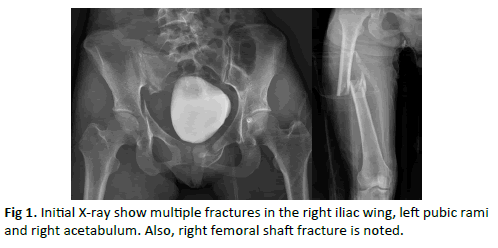
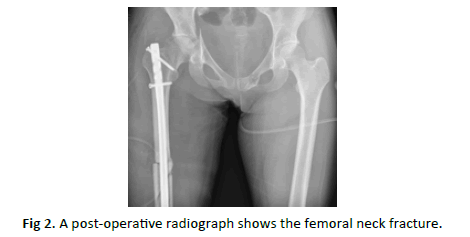
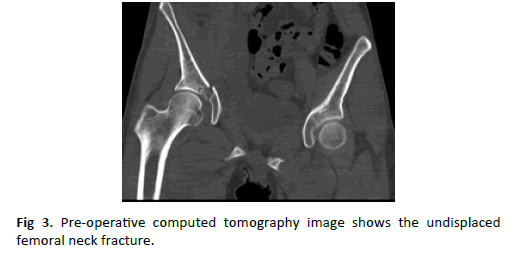
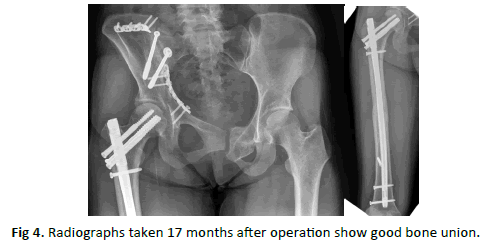
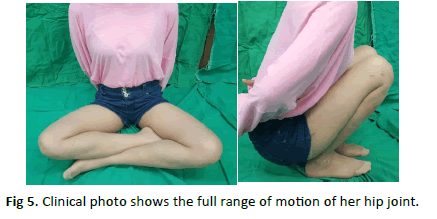


 Journal of Orthopaedics Trauma Surgery and Related Research a publication of Polish Society, is a peer-reviewed online journal with quaterly print on demand compilation of issues published.
Journal of Orthopaedics Trauma Surgery and Related Research a publication of Polish Society, is a peer-reviewed online journal with quaterly print on demand compilation of issues published.